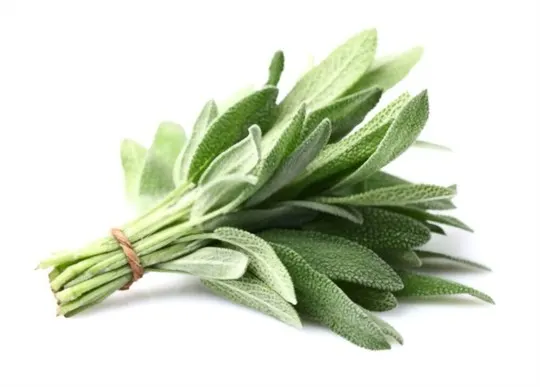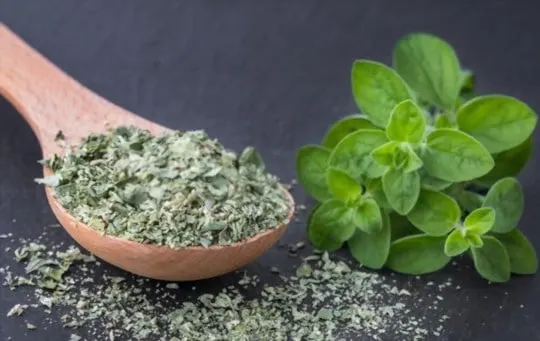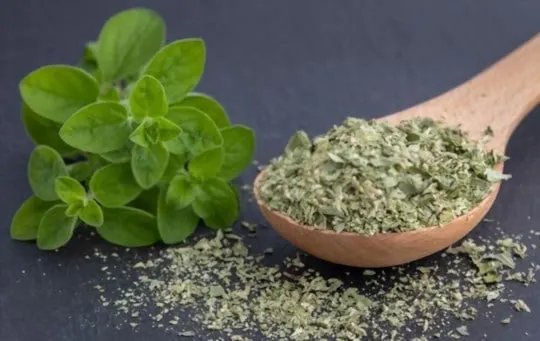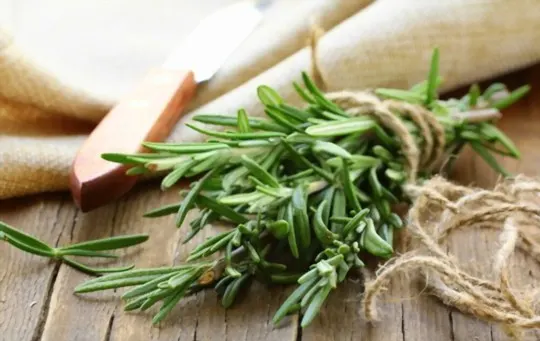Rosemary is an aromatic herb that has been used for centuries to enhance the flavor of dishes ranging from pasta and proteins to vegetables.
But ever wondered how to use Rosemary? Whether it’s fresh or dried, rosemary adds a distinct flavor profile to your food and can make all the difference in taste.
If you find yourself lacking this distinct ingredient, there are five substitutes that will give your dish the same complexity and flavor as a sprinkle of rosemary.
From marjoram to oregano, learn about these five substitutes for adding rosemary’s unique zing.
What’s Rosemary?

Rosemary is a fragrant, woody herb with a pungent aroma and flavor, much loved in Mediterranean cooking.
It’s an essential ingredient in Italian dishes, such as pizza Margherita, and many savory dishes such as roasted vegetables.
The leaves are quite tough and spiky when fresh and should be chopped very finely or used whole to infuse their flavor into a dish.
The best way to enjoy this herb’s flavor is to buy it fresh.
Look for branches that are firm and have plenty of leaves on them – avoid any that look old and brittle or have yellowed or spotted leaves.
Rosemary can be stored for up to two weeks wrapped in damp kitchen paper inside the fridge.
Alternatively, freeze it as individual stalks – just pop them into a freezer bag and use as needed.
You can also dry rosemary at home – just spread the leaves over baking parchment in an oven at its lowest setting for 2-3 hours until brittle before storing them in an airtight container until use.
Rosemary is frequently used with garlic, oregano, thyme, basil and parsley to create aromatic flavor combinations that enhance the taste of many favorite dishes such as roast chicken or beef stew.
Its needle-like leaves give beautiful texture consistently throughout your dish when used whole too.
The 5 BEST Substitutes for Rosemary in Recipes
However, there may come a time when rosemary just isn’t available or you want to mix up your flavors.
Here’s a detailed comparison of the 5 best substitutes for rosemary in recipes, along with their key characteristics and proper ratios:
| Substitute | Key Characteristics | Proper Ratio |
|---|---|---|
| Thyme | Milder flavor compared to rosemary. It has a slightly earthy and herbal taste that complements many dishes. | Use an equal amount as rosemary |
| Sage | Strong flavor similar to rosemary. It has a slightly peppery and earthy taste that adds depth to recipes. | Use an equal amount as rosemary |
| Marjoram | Has a delicate and sweeter flavor than rosemary. It adds a subtle herbal note to dishes. | Use an equal amount as rosemary |
| Savory | Similar to thyme, it has a milder flavor than rosemary. It has a slightly peppery and herbaceous taste. | Use an equal amount as rosemary |
| Oregano | A versatile herb with a robust and slightly bitter flavor. It can add complexity to dishes as a substitute for rosemary. | Use an equal amount as rosemary |
Now let’s explore each substitute in more detail:
1 – Thyme

Thyme is a flavorful herb that can be used as an excellent substitute for rosemary in most recipes.
It has a slightly different flavor, but it is very similar and can add a nice kick to your dish.
Thyme has an earthy, sweet flavor and smell that will add depth to any savory dish.
Its leaves are small, thin, and dark green in color with purple undertones.
The texture of fresh thyme is soft and fragrant when crushed between your fingers or toothpick.
Dry thyme can also be used; however, it doesn’t deliver the same flavors as fresh herbs do.
Like rosemary, you should use thyme sparingly in your dishes; otherwise the taste can become overpowering quickly.
2 – Sage

Sage, also known as salvia officinalis, is an evergreen shrub with woody stems and silvery-green leaves.
It has a slightly bitter flavor which works well as a rosemary substitute in recipes that include other flavors to balance the intensity.
Its aroma is strong and herbaceous with a slightly floral finish.
When substituting sage for rosemary, use half the amount called for in your recipe because it has a more intense flavor.
Sage pairs well with many dishes including roasted vegetables, pork, poultry, fish, stews and tomato sauces.
Try adding it to salad dressings or rubbing its leaves onto meat for added flavor before cooking it.
3 – Marjoram

Marjoram is a close relative of oregano and both herbs are in the mint family.
Marjoram’s flavor is a bit milder than oregano and can be substituted in a variety of dishes.
The lovely scent of marjoram makes it ideal for soups, stews, vegetables, poultry and fish dishes.
Just keep in mind that it doesn’t hold up as well when exposed to high temperatures for extended cooking periods.
A bit of this flavorful herb adds sweetness to many dishes like pilafs, pasta sauces and egg dishes.
Marjoram also pairs nicely with garlic, onion and other herbs like thyme or tarragon.
Use it frequently as a topping for pizzas or flatbreads along with other toppings such as olives or mushrooms.
To substitute marjoram for rosemary try using it in recipes that call for smaller amounts of these herbs — 1/3 teaspoon rosemary = 1/2 to 3/4 teaspoon marjoram — but no more than that because marjoram has a milder taste than rosemary and you don’t want your dish to be overpowered by its delicate flavor.
4 – Savory

Savory is a flowering plant that is related to the mint family.
It is native to the Mediterranean, and it has many uses in a variety of dishes.
The leaves of savory can be used fresh or dried, and they have a slightly peppery taste.
When choosing savory as a substitution for rosemary, it’s best to use more of it than you would with rosemary because the flavor is much milder.
Savory can be used to replace rosemary in meat glazes and sauces.
It can also be used in marinades and vinaigrettes for salads or vegetables, as well as rubs for meat dishes.
It pairs well with garlic and thyme so adding these ingredients when using savory as an alternative to rosemary will enhance the flavors in your dish.
5 – Oregano

Oregano is a popular and versatile herb with a strong flavor profile, making it one of the best rosemary substitutes in many recipes.
It is most notably used in Italian, Spanish and Greek cuisines and can be used to add an earthy, herby flavor to dishes.
The scent of oregano is actually quite similar to that of rosemary, which makes it an excellent substitution.
Oregano will add a bit more sweetness to the dish than rosemary would, so be sure to adjust your seasonings accordingly.
To substitute oregano for rosemary in a recipe, use about twice as much as you would for rosemary (for example: if a recipe calls for 1 tablespoon of fresh rosemary, use 2 tablespoons of fresh oregano).
Additionally, dried oregano should also be cut back accordingly; use half of what the recipe calls for in terms of dried rosemary if substituting with dried oregano.
Conclusion
It is clear that rosemary is a special kind of herb with its own unique flavor, and it can be hard to replicate in cooking.
However, the five best substitutes for this fragrant herb — thyme, oregano, marjoram, sage and basil — have been outlined above and should make your next dish flavor as delicious as possible.
All these herbs can easily be added to a variety of recipes and are sure to bring out the flavors you’re trying to achieve.
No matter which substitution you choose, it is always important to consider the original amount of rosemary needed in a recipe before substituting a different herb.
Depending on the volume and intensity of flavor difference between rosemary and its alternatives, more or less might need to be added per measurement compared to what is listed in the recipe.
That way, you can ensure that your dish will turn out exactly how you want it.

The 5 BEST Substitutes for Rosemary in Recipes
Ingredients
- 1 – Thyme
- 2 – Sage
- 3 – Marjoram
- 4 – Savory
- 5 – Oregano
Instructions
- Choose your preferred substitute from the list of options.
- Organize all of your ingredients.
- Use the proper substitute to cook your recipes.
